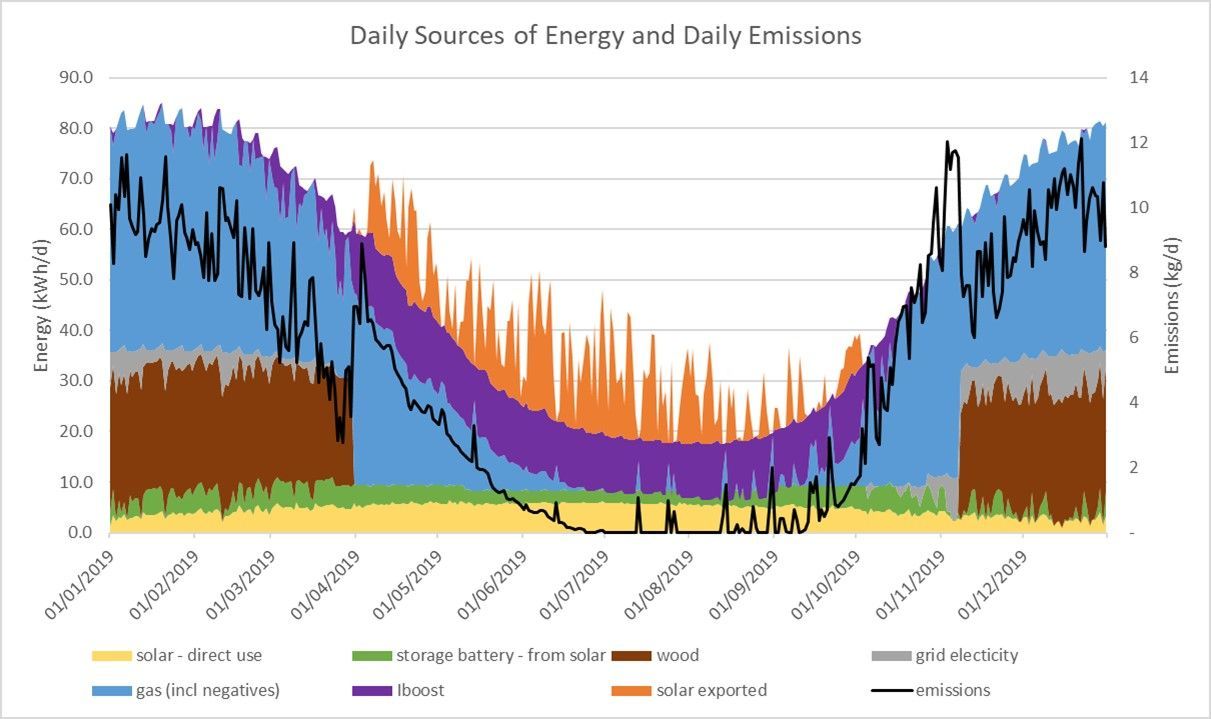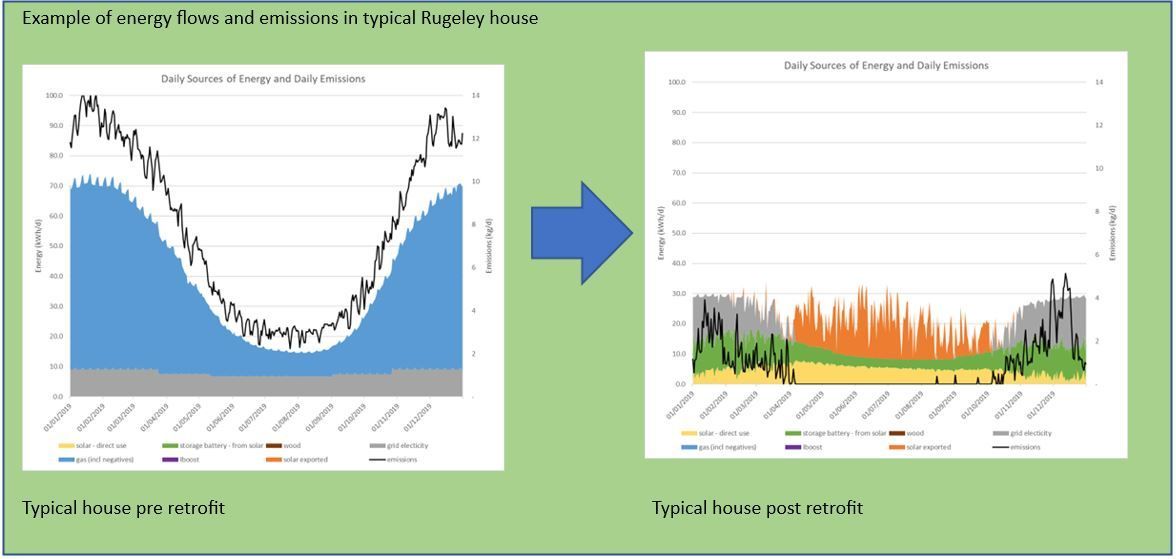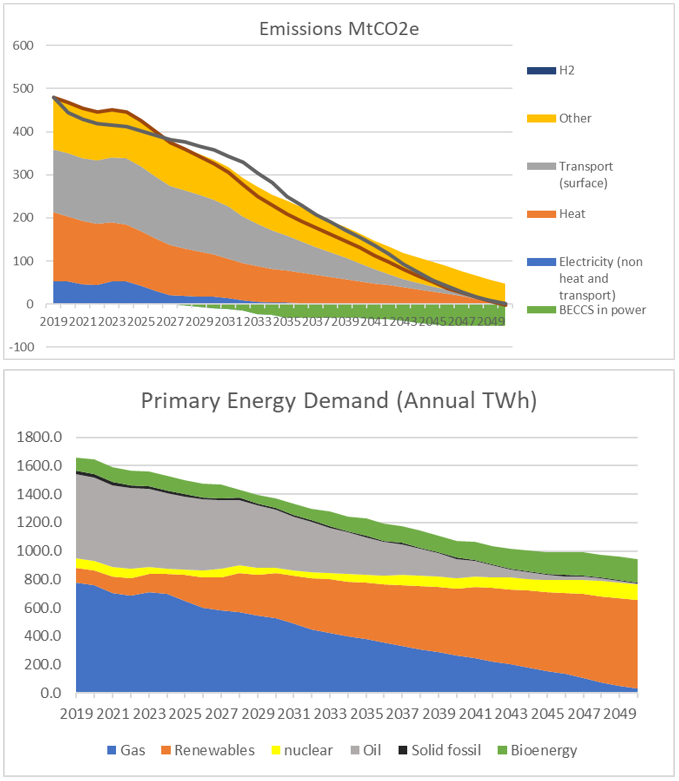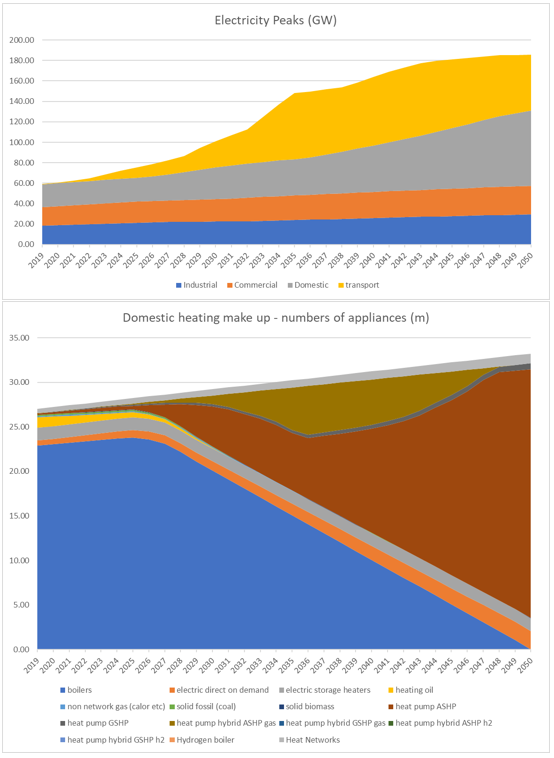
Data Energy and Climate Change Consultancy
Modelling future possibilities
One of DECCC's strengths is bespoke modelling, for specific clients requirements.
However DECCC has developed two specific models that have great value.
It also has great expertise with one public model, which National Grid created via an innovation project.
These models are ....
DES - Domestic Energy Scenarios
DECCC has developed a detailed domestic energy model based on experience in the gas industry and development of Future Energy Scenarios for National Grid
This models all energy demand and supplies to an individual house for every 30 minutes across a year.
It is used to understand how the energy flows in a house, and how this changes under a variety of retrofit options and how this impacts emissions and energy bills. This helps understand what is best for an individual household or a network of houses, for a variety of retrofit options.
Example of energy flows in house
This model was used to develop retrofit scenarios for parts of the Zero Carbon Rugeley project
These projects have also identified the need to fully utilise battery capacity under variable and smart tariffs. The addition of tariff charging under variable tariffs enabled maximised battery use, homeowner revenue potential and therefore return on investment.
In summary, the technologies modelled are
• Solar PV
• Heat Pump
• Gas boiler
• Battery storage
• Heat storage
• Solar Diverter - iBoost - (where applicable)
• Wood burner
The model is unique as it
• applies electricity modelling to gas and heat demand modelling methodologies
• models all energy in a house at 30 minute granularity
This is this something stockholders and planners can use to inform their retrofit plans and impacts of various heating technologies. This can then be used to quantify the impact they can have the local and national energy networks, to help optimise pathways for net zero housing options.
Whole System Energy Model
DECCC has developed a Whole System Energy Model that analyses all GB energy and carbon emissions from each year from 2020 to 2050.
In line with DECCCs philosophy, this model is as simple and transparent as possible (which is difficult in this complicated subject area).
It enables various pathways to decarbonisation to be developed quickly, and their impacts on all energy supply and demands to be understood at a national level on an annual basis.
It enables the modelling of electrification and hydrogen pathways to be established to help understand the pros and cons of varying proportions of both in a mixed pathway.
Importantly it also produces peak gas and electricity demands, which are both produced on a 1 in 20 peak day basis. This is the basis that gas networks plan to, as ensuring the heat that they provide is crucial. This is important as most peak electricity demand analysis is based on an ACS (Average Cold Spell), which is appropriate for current peak forecasts, but understates electricity peaks, when heating is electrified. This risks under investment in electricity networks.
The model is heavily focused on heating, particularly decarbonising domestic heating, and enables various retrofit heating technologies to be analysed, and their impacts on peak demands to be accurately established.
There are many outputs from this model. An illustrative small selection of these outputs are shown in the following charts.
Electricity Dispatch and Network Modelling
National Grid created a Electricity System Illustrator (ELSI) model via an innovation project, just before 2020. This model was intended to allow users to model electricity supply, demand, flows and network constraints across the UK, without needing access to the expensive software that they use.
The model replicates the network modelling used by National grid in their NOA (Network Options Assessment) process, albeit with less granularity. However this still enables significant insights into networks operations, and the impacts of low carbon generation, storage and interconnectors, their value to the network operator.
DECCC has significant experience populating and running this model, the simulate the electricity network, due to a previous role in helping developing this model, and has used this model's outputs to successfully challenge outputs from this process.
DECCC can run this analysis quickly using this model, enable the value of various infrastructure, and flexibility options assessed.





